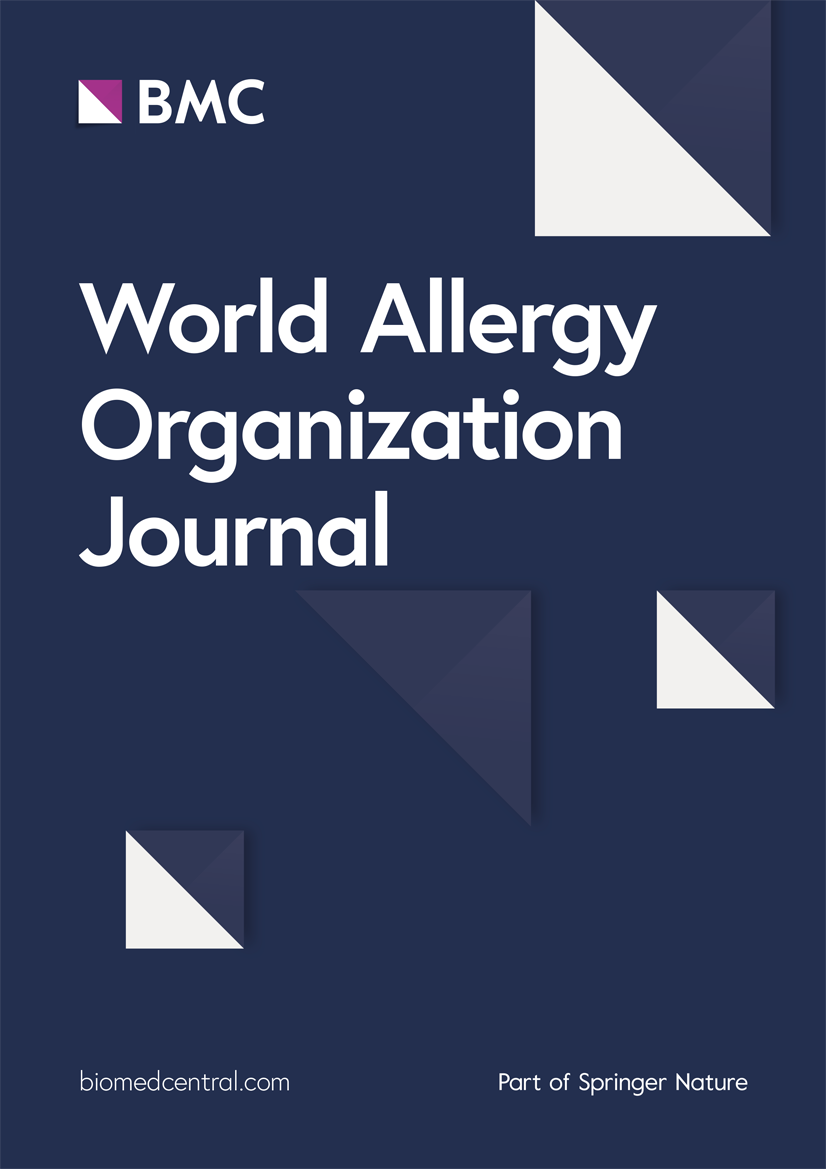Integrated multi-omics profiling reveals shared mechanistic pathways in asthma-allergic rhinitis comorbidity: A hybrid machine learning framework leveraging Mendelian randomization for precision diagnostics
IF 4.3
2区 医学
Q2 ALLERGY
引用次数: 0
Abstract
Background
Asthma (AS) and allergic rhinitis (AR), though sharing Th2-driven inflammation, exhibit distinct clinical trajectories, with molecular mechanisms underlying their comorbidity remaining poorly characterized. This study aimed to delineate conserved and divergent immunometabolic pathways and develop a blood-based diagnostic framework integrating multi-omics biomarkers.
Methods
We harmonized 8 peripheral blood transcriptomic cohorts (n = 1,073) using ComBat correction, performed Mendelian randomization (MR) across 5 asthma cohorts (FinnGen Release 12), and constructed a combinatorial machine learning model (113 configurations) validated in 5 independent cohorts.
Results
Bidirectional regulation of the Y-chromosomal gene RPS4Y1 (upregulated in AR, downregulated in AS) was linked to disease-specific immunometabolic reprogramming (P < 0.001). MR identified 7 causal plasma proteins (GRAMD1C, GSTO1, IL1RAP, MMP9, PDXK, SAT2, SIGLEC12) intersecting transcriptomic signatures, implicating oxidative stress as a shared mechanism. The glmBoost-RF diagnostic model integrating these biomarkers achieved superior accuracy (AUC >95% in 4/5 cohorts), outperforming conventional classifiers reliant on IgE or eosinophils. Immune profiling revealed AR-specific native B-cell expansion and Treg depletion versus AS-associated CD4+ T/NK cell activation (P < 0.05). Coordinated dysregulation of Y-chromosomal genes (EIF1AY, KDM5D) suggested sex-dimorphic immune modulation.
Conclusions
This integrative analysis establishes RPS4Y1 as a central regulator of allergic inflammation dimorphism and delivers a validated multi-omics classifier for precision diagnostics. The findings bridge molecular sex differences, metabolic-immune crosstalk, and clinical heterogeneity, advancing phenotype-specific therapeutic strategies.
综合多组学分析揭示哮喘-变应性鼻炎共病的共同机制途径:利用孟德尔随机化进行精确诊断的混合机器学习框架
背景:哮喘(AS)和变应性鼻炎(AR)虽然共享th2驱动的炎症,但表现出不同的临床轨迹,其合并症的分子机制尚不清楚。本研究旨在描述保守的和不同的免疫代谢途径,并开发一种基于血液的诊断框架,整合多组学生物标志物。方法采用ComBat correction对8个外周血转录组学队列(n = 1,073)进行协调,在5个哮喘队列中进行孟德尔随机化(MR) (FinnGen Release 12),并构建了一个组合机器学习模型(113个配置),该模型在5个独立队列中得到验证。结果y染色体基因RPS4Y1的双向调控(在AR中上调,在AS中下调)与疾病特异性免疫代谢重编程有关(P < 0.001)。MR鉴定出7种血浆致病蛋白(GRAMD1C、GSTO1、IL1RAP、MMP9、PDXK、SAT2、SIGLEC12)交叉转录组特征,暗示氧化应激是一种共享机制。整合这些生物标志物的glmBoost-RF诊断模型获得了更高的准确性(4/5队列中的AUC >;95%),优于依赖IgE或嗜酸性粒细胞的传统分类器。免疫分析显示ar特异性天然b细胞扩增和Treg消耗与as相关CD4+ T/NK细胞活化(P < 0.05)。y染色体基因(EIF1AY, KDM5D)的协调失调提示性别二态免疫调节。结论该综合分析确定了RPS4Y1是过敏性炎症二态性的中心调节因子,并为精确诊断提供了一种有效的多组学分类器。这些发现弥合了分子性别差异、代谢免疫串扰和临床异质性,推进了表型特异性治疗策略。
本文章由计算机程序翻译,如有差异,请以英文原文为准。
求助全文
约1分钟内获得全文
求助全文
来源期刊

World Allergy Organization Journal
Immunology and Microbiology-Immunology
CiteScore
9.10
自引率
5.90%
发文量
91
审稿时长
9 weeks
期刊介绍:
The official pubication of the World Allergy Organization, the World Allergy Organization Journal (WAOjournal) publishes original mechanistic, translational, and clinical research on the topics of allergy, asthma, anaphylaxis, and clincial immunology, as well as reviews, guidelines, and position papers that contribute to the improvement of patient care. WAOjournal publishes research on the growth of allergy prevalence within the scope of single countries, country comparisons, and practical global issues and regulations, or threats to the allergy specialty. The Journal invites the submissions of all authors interested in publishing on current global problems in allergy, asthma, anaphylaxis, and immunology. Of particular interest are the immunological consequences of climate change and the subsequent systematic transformations in food habits and their consequences for the allergy/immunology discipline.
 求助内容:
求助内容: 应助结果提醒方式:
应助结果提醒方式:


